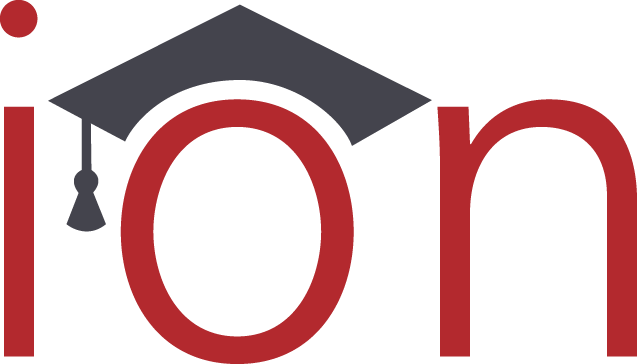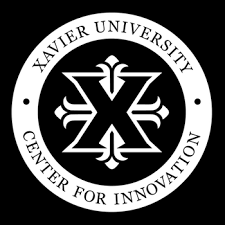Mary Curran Hackett is an instructor at Xavier University and the Innovation Curator for the new Xavier University Center for Innovation. Her work brings together entrepreneurs, startups, employers, community leaders, faculty, staff, and students to solve complex problems in three main areas: Higher education, Healthcare, and Innovation. We’re pleased to include Mary in our ionGuest series, and take you inside Xavier University, where Mary and her colleagues are busy transforming the culture of innovation on their campus and out in the world.
“We need to show students, parents, and employers that education matters.” – Mary Curran Hackett
What can you tell us about Xavier University? And why it has a Center for Innovation?
Xavier University is a Jesuit institution with a long tradition of helping others make the world a better place. Ignatius Loyola, the founding father of the Jesuits, believed that every human being has the potential—a spark, if you will—that could ultimately change the world. He instructed others to use their unique sparks and to “Go forth and set the world on fire.” He believed in connecting with people on a deep level, using empathy and compassion. He also believed in helping others solve problems using deep thinking and understanding, and in inspiring others to change and ultimately transform themselves in the process. In keeping with this tradition, Xavier University leaders created the Center for Innovation to help forward this Jesuit mission.
CFI has four simple goals: to connect, inspire, ignite and transform and we’re focused on three verticals. We have an amazing Health Services Administration program and Nursing program, so we have taken a special interest in problems facing healthcare. Our Healthovate! Summits have brought leaders in healthcare, doctors, nurses, faculty, students, and innovators together to address our current population health crisis. We help local organizations use innovative strategies and tools to solve problems in their own organizations.
Another vertical is the higher education market. We realize that our current higher education system is simply not sustainable. We need to find real solutions to the complex problems facing universities, mainly how they operate and how make money. Student debt is at an all-time high, tuition keeps rising, and students aren’t as prepared as they need to be for the emerging and ever-changing marketplace. We’re working with universities across the nation to figure out ways to solve this and many other problems.
The third vertical is the innovation sector. We are working both with start-ups and major organizations to implement innovation processes into their daily operations so that they can transform and stay ahead in their respective industries. We are fully committed to transforming the culture of our university and other universities to embrace innovation as a means of transformation. We believe we can do it—one spark, one person, one idea at a time.
How do you work with the University and CFI partners and clients?
Design Thinking
We are all trained as certified Design Thinkers here at the Center, and we are often called on to teach Design Thinking as well as other innovation systems to teach others how to think creatively. We want to make creative thinking accessible to everyone and we believe it can be taught. We have had clients ask us how they might approach a certain problem. We sit down with them and help them do just that. We’ve had a retail customer come to us and ask us how to assess and help their floor managers. We walked them through Design Thinking strategies—and showed them how to use observation as a key tool to form insights.
A lot of what we teach people they already know how to do on some level, but they are simply poor practitioners of it. Design Thinking enables and reminds people to withhold judgment, act from a place of empathy, and really understand a problem before you go off and try to fix it. Sometimes our clients come to us with a problem and through Design Thinking we help them discover they are solving the wrong problem. They need to take a step back and observe all the key players and form new insights.
Transforming the Culture of Innovation on Campus
We run workshops for our faculty and staff, and we actually get to see transformation right before our eyes when they come up with brilliant ideas. People who walked into the center saying to me, “Don’t expect much from me, I am not creative,” have come out of a session with us with 10 ideas that they want to take back to their department—whether a program, a new course, or a new way of running meetings.
In everything I write and say, I try to keep the goals to inspire, ignite, and transform people. Are we posting relevant stories? Inspirational ideas or people? Are we giving people the motivation they need to implement change? Are we introducing people to ideas and concepts they’ve never heard of? Are we letting people know what we’re up to? Where they can find us?
Mentoring, PR, Social Media, Brand Development
Another way I have helped others is I consult and mentor start-ups while they are creating their pitch. I can listen to them and let them know what parts of their story or presentation works and which ones could use more fine tuning. I have also helped with organizations and internal departments work on their social media strategy. We built our entire platform and PR strategy without a marketing budget. We used all of our free resources—email, newsletters, PR, and social media to spread the word about what we were doing.
We see our social media platform as a way to connect, inspire, transform, and ignite as well, and we try to do that every day. We had zero friends and followers when we launched the CFI. (Honesty, I thought it was going to be impossible to get anyone to follow us). But, we did it. I was given a list of 25 names to start with for invites to our first Open House—and we ended up having 450 people show up! That’s the power of social media. I work with an awesome young intern who keeps me up to date on the lingo and lets me know where we need to be on social sites and what we need to be posting.
I also teach a Storytelling program that helps people use story to communicate their brands (personal or organizational). I have helped major organizations and individuals just starting their own company to draft and write their story—which helps them clearly define their brand. There is nothing better than watching a person who came to me saying, “I am not a writer. I am not creative, I can’t do this!” leave my program with a draft of their personal mission statement or their business value proposition.
What are your current thoughts on the future of higher education?
I am completely optimistic. (But, I lean toward optimism. I have been known to stand on the side of the road with a broken down car and 100 degree heat and say, “Well, this will be an enlightening experience!”) Needless to say, I believe we have all the tools we need to transform higher ed. I believe in the value of our learned leaders and professors. I believe in their commitment to their schools and their students. I do however believe that administrations have become bloated, and some key administrators salaries are off the charts. I also think we should focus less on facilities and more on education. Parents would get some serious sticker-shock if they saw how much the recreation center their kids are working out in cost, but the salary of the adjunct teacher teaching their son or daughter a required course is far below poverty level. (I speak from experience, I have been an adjunct faculty before.)
Most students are struggling with debt. I speak from experience here too. By the time my son and daughter graduate from their colleges—in 12 years—I will finally pay off my own school loans. I can’t even imagine what the cost of their education will be. Simply put, we can’t keep raising tuition. It’s not sustainable. We can’t keep cutting, that’s not sustainable. We can’t keep paying adjunct faculty and even starting faculty such low wages and expect to maintain top talent. There are ways to fix this. Education is the most important thing for any culture. I believe that. We need to show students, parents, and employers that education matters.
We need employers and organizations to invest in education, like they do lobbies or other non-profits. There is no other way to transform the world than to educate its population. We can never, ever lose sight of this vision. I will always believe fully in the need for a liberal arts education, but I also believe we can marry that liberal arts education with applicable skills that are greatly needed in our world today—and will be needed in the future.
Employers need employees who can quickly assess a problem and work to find solutions. They’ll also need students to be able come up with disruptive and innovative ideas. Our new School of Arts and Innovation have brought together innovation systems and classes like Intro to Making and an Innovation minor to the traditional core curriculum. And we believe this is just the start of the transformation. Employers will always need what a liberal arts education can provide—critical thinking skills, understanding and appreciation for diverse ways of thinking and ethical implications, as well as the importance of service to others. Innovation processes can help them do just that.
I’m so proud to be working at a university that is on the vanguard of finding real, lasting solutions—and see higher education as the place to start.
For information about the student loan management tools from iontution.com, we invite you to watch this short overview. Like what you see? Sign up for your account here!


